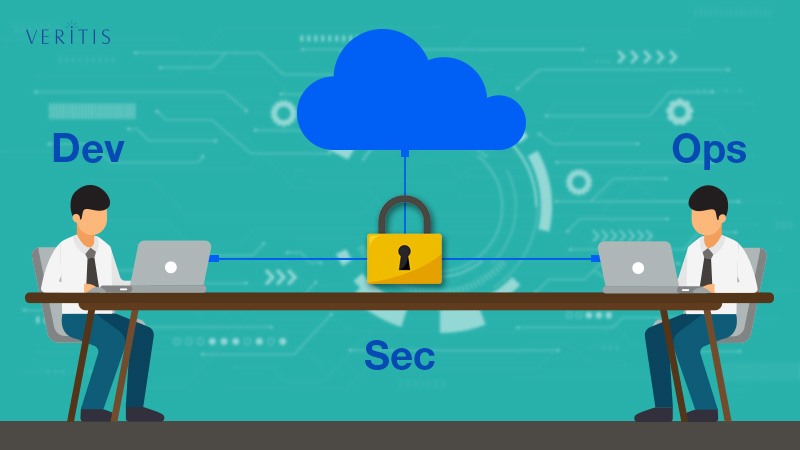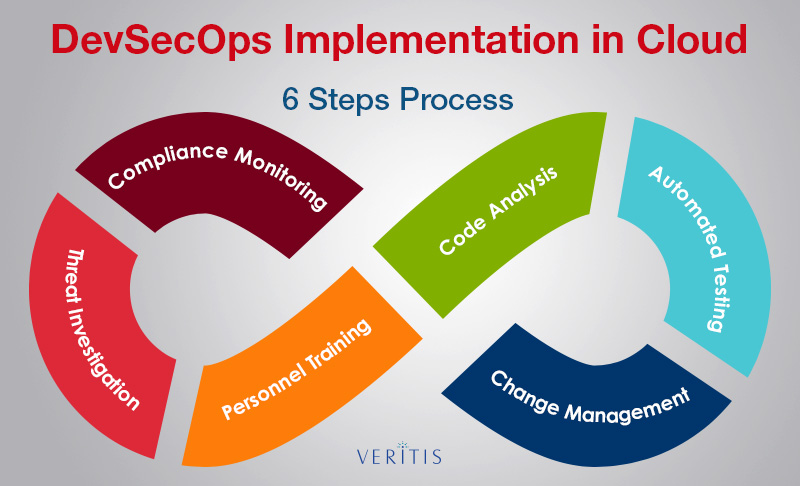DevSecOps Solution to Cloud Security Challenge

Cloud security is one serious aspect that the IT industry experts, firms and all other related stakeholders have been most concerned about since the recent past! Worries over security in the cloud are coming at a time when the cloud technology is poised for rapid growth in 2019 and further, encouraged by its adoption trend in 2018 from the past.
The whole industry is stuck at this juncture thinking of ways to go for immediate cloud adoption, while also having the security concern addressed.
While DevOps was another major technology trend in 2019, security was also a matter of concern for DevOps alike Cloud. But that was only until DevSecOps solution arrived, which began with security integration at all stages of the software process chain addressing security challenge in SDLC.
Migrate to Cloud Security Services
The same DevSecOps solution comes as a savior for Cloud too! Let’s see how…
DevSecOps Approach to Cloud Security
The majority of leading firms are striving to deliver high and highly-scalable performance with 24/7 digital services that are built on customized modern architectures.
Successful models of modern architectures are being developed on the stack of advanced tiers, technologies and microservices, backed by the market’s leading cloud platforms such as AWS, GCP, and Azure.
Above all these advanced services, security continues to be a key concerning factor for the majority of them.
Applying DevSecOps Solution for Cloud Security definitely solves the issue. As the surveys show, the majority of firms developing apps on the cloud are inclined towards adopting DevSecOps security tools and processes for improved agility and high reliability.
Adopting DevSecOps principles in Cloud requires an effective strategy and planning involving cultural changes, especially in automating security and configuration of assets in the cloud.
For this, security teams will need to:
- Work in collaboration with Development teams who push code to cloud-based applications, to ensure quality aspect in the production cycle is achieved without affecting the pace of the process
- Coordinate with the Quality Analysis and Development teams in defining qualifier and parameter prerequisites needed for promoting code
Cloud-native machine data analytics platform is also an important requirement to enhance cloud security, considering the short-term nature of modern applications and limitations associated with the traditional monitoring and security mechanisms.
Adding to the machine data analytics solutions, DevSecOps principles bring you closer to achieving software agility, high reliability and enhanced security through continuous monitoring and keen analyzation of end-to-end tools and processes across the lifecycle.
DevSecOps over Next-gen Cloud Security Tools
Fast-evolving next-generation cloud security tools can address some key gaps but doing so along with the integration of data and workflow remains a challenge for them.
Although such tools offer security analytics for cloud and application stacks, SecOps finds it difficult to manage integration across these tools.
DevSecOps can work it out if you can support it by investing in:
- Solutions that expand security integration across SecOps and ITOps/DevOps environments
- Security analytics with high scalability that can support on-premises and cloud infrastructure
While DevOps adoption can focus on continuous monitoring of CI/CD cycles and tools, DevSecOps shifts left security workflows, provided a common analytics platform for DevOps and SOC teams is provided.
DevSecOps in Cloud offers:
- The pace of innovation by means of Security Automation
- Effective security validation of instance deployments
- Risk-based timely actions
- Automated incident response and remediation
It has to be understood that DevSecOps in Cloud is beyond managing CI/CD cycles (as in DevOps) and is majorly about ‘Security Automation’, which is key to cloud operations. According to the 2018 Global Security Trends Report, 45 percent of IT Security stakeholders are considering DevSecOps solution as one of the key organizational transformations needed to improve security in a cloud environment.
The next question is how do you that?
ALSO READ: What are the best DevSecOps practices for security and balance agility?
DevSecOps implementation in Cloud

This is basically a six-step process involving:
- Code Analysis: Continuous improvements to the software as and when required is the need of the hour for today’s IT industry. Agile development teams have already got this trend, but traditional security models are unable to meet the rapid delivery cycles. Agile methodologies help firms deliver updates on a faster rate while also checking code analysis part of quality assurance.
- Automated Testing: Automation is key to DevSecOps principles. Automated testing simplifies the testing process with a minimum set of scripts and the associated tools which can also execute repeatable test cases with ease and also save time. Since they are automated, they perform the same task every time called for, thus avoiding human errors. Doing this at every stage of the process chain saves time and gives final quality output.
- Change Management: Involvement of developers to key processes like security makes an effective change management process. Making them aware of related tools and giving them expertise in addressing mission-critical issues ensures timely address of issues and timely attention to possible vulnerabilities.
- Compliance Monitoring: Compliance continues to be a major aspect of any organization in this fast-evolving IT industry. Having the required regulations in place is very important in case of new code creation or modifying the existing source code. Here, evidence plays a major role in real-time keeping you prepared for audits and reports. So, having the right compliance eases the burden at times of audits and keeping up the transparency.
- Threat Investigation: Regular monitoring of security is key to the success of any organization, irrespective of relevant tools and procedures already in place. Continuous discovery, threat investigation, regular security scans and code reviews are key to the identification of any possible vulnerabilities.
- Personnel Training: Empowering the personnel internally is very important for any organization. This can be done by means of introducing certification courses, hands-on training on security-specific topics, among others. More the knowledge the teams gain, the more successful they will be the organizations.
All the aforementioned six steps form the building blocks for the DevSecOps strategy in Cloud.
What are you waiting for? The answer is ready with you, deploy it to address concerns over Cloud Security!